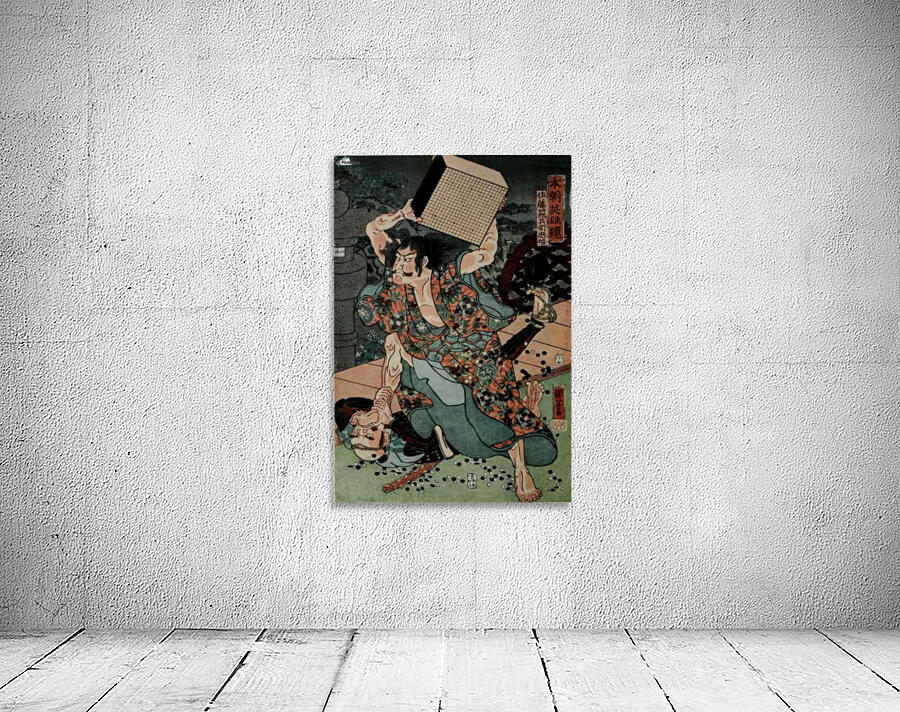

You mean as in the tale of Goban Tadanobu (axd: and see also Tadanobu furiously resisting arrest, wielding a go board with one hand and grasping the hair of his treacherous mistress with the other, the go pieces flying in all directions.) Instead, I think many commemorate a real incident, in which a particularly determined samurai defended his master against assailants by hitting them with the goban, it being the only "weapon" to hand. However, I believe they do not all celebrate the "art" of losing in singularly bad style.
#Sato goban series#
And of course, the cover art on Bozulich's Get Strong at Go series demonstrates various "continuations" following this tesuji. The IGS Art Gallery has an excellent example. In fact, if you look back at some classical Japanese art, you'll find this theme dates back quite a ways.

Less appealing club location due to dent in wall. Rushes all other games because the players are hurrying to finish in order to give the injured opponent proper medical treatment. Death or serious injury may be caused to your opponent. This is one of the worst habits in my opinion. If the man is seriously injured, he must wait until a member of the club is not playing a game before he can receive help. The old man then uppercuts his opponent and storms out of the room. This not only causes loud noises and distractions but also many injuries due to the flying stones. Often times at my Go club, enraged old men will take the Goban and hurl it against the wall. "Throwing the Board Against the Wall Denting the Wall and the Board Prior to Uppercutting Your Opponent" Phylometabolic evaluation suggests that the TCA cycle with reversible CS may represent an ancestral mode of the rTCA cycle and raises the possibility of a facultatively chemolithomixotrophic origin of life.Ĭopyright © 2018 The Authors, some rights reserved exclusive licensee American Association for the Advancement of Science. Under a chemolithoautotrophic condition, a rTCA cycle occurred with the reverse reaction of citrate synthase (CS) and not with the adenosine 5'-triphosphate-dependent citrate cleavage reactions that had been regarded as essential for the conventional rTCA cycle. A combination of genomic, enzymatic, and metabolomic analyses of a deeply branching chemolithotrophic Thermosulfidibacter takaii ABI70S6 T revealed a previously unknown reversible TCA cycle whose direction was controlled by the available carbon source(s). Inorganic carbon fixation is essential to sustain life on Earth, and the reductive tricarboxylic acid (rTCA) cycle is one of the most ancient carbon fixation metabolisms. 8 Core Research for Evolutional Science and Technology (CREST), Japan Science and Technology Agency (JST), 7 Goban-cho, Chiyoda-ku, Tokyo 102-0076, Japan. 7 Department of Subsurface Geobiological Analysis and Research, Japan Agency for Marine-Earth Science and Technology (JAMSTEC), 2-15 Natsushima-cho, Yokosuka 237-0061, Japan. 6 NITE Biological Resource Center (NBRC), National Institute of Technology and Evaluation (NITE), 2-49-10 Nishihara, Shibuya-ku, Tokyo 151-0066, Japan. 5 Department of Synthetic Chemistry and Biological Chemistry, Graduate School of Engineering, Kyoto University, Katsura, Nishikyo-ku, Kyoto 615-8510, Japan. 4 Institute of Low Temperature Science, Hokkaido University, Kita-19, Nishi-8, Kita-ku, Sapporo 060-0819, Japan. 3 Department of Biogeochemistry, Japan Agency for Marine-Earth Science and Technology (JAMSTEC), 2-15 Natsushima-cho, Yokosuka 237-0061, Japan. 2 Research and Development Center for Marine Biosciences, Japan Agency for Marine-Earth Science and Technology (JAMSTEC), 2-15 Natsushima-cho, Yokosuka 237-0061, Japan. 1 Research and Development Center for Marine Biosciences, Japan Agency for Marine-Earth Science and Technology (JAMSTEC), 2-15 Natsushima-cho, Yokosuka 237-0061, Japan.






 0 kommentar(er)
0 kommentar(er)
